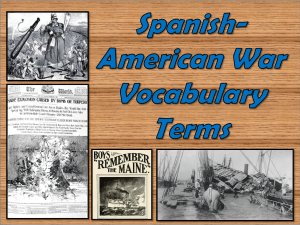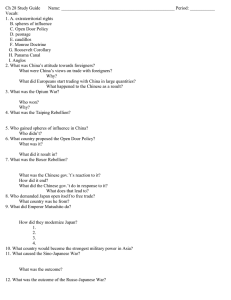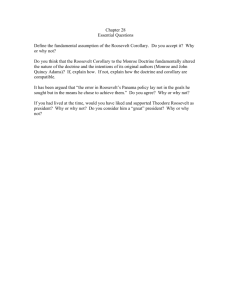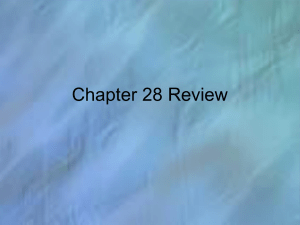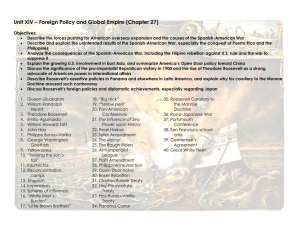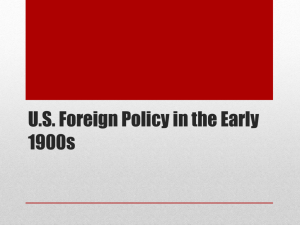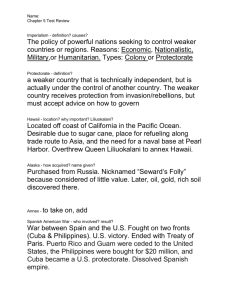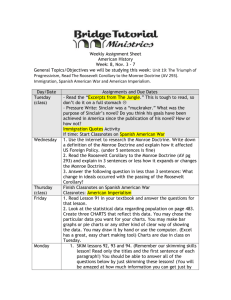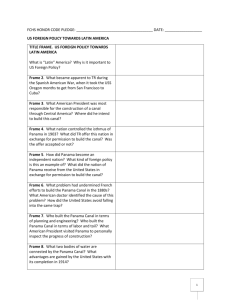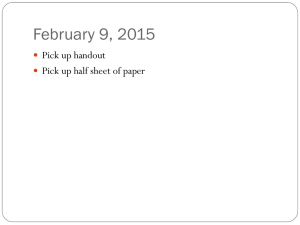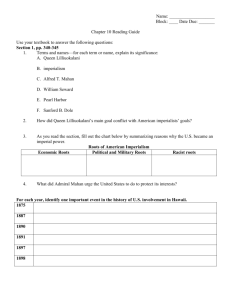USII.5b Impact of President Roosevelt`s Foreign Policy NOTEP
advertisement
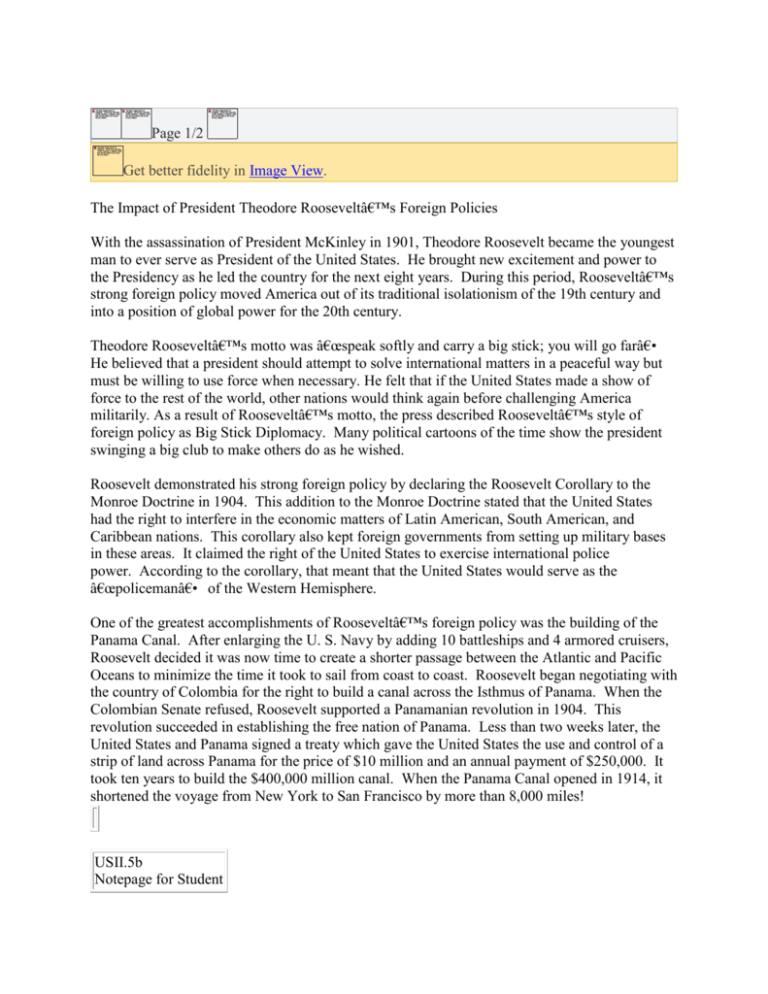
Page 1/2 Get better fidelity in Image View. The Impact of President Theodore Roosevelt’s Foreign Policies With the assassination of President McKinley in 1901, Theodore Roosevelt became the youngest man to ever serve as President of the United States. He brought new excitement and power to the Presidency as he led the country for the next eight years. During this period, Roosevelt’s strong foreign policy moved America out of its traditional isolationism of the 19th century and into a position of global power for the 20th century. Theodore Roosevelt’s motto was “speak softly and carry a big stick; you will go far― He believed that a president should attempt to solve international matters in a peaceful way but must be willing to use force when necessary. He felt that if the United States made a show of force to the rest of the world, other nations would think again before challenging America militarily. As a result of Roosevelt’s motto, the press described Roosevelt’s style of foreign policy as Big Stick Diplomacy. Many political cartoons of the time show the president swinging a big club to make others do as he wished. Roosevelt demonstrated his strong foreign policy by declaring the Roosevelt Corollary to the Monroe Doctrine in 1904. This addition to the Monroe Doctrine stated that the United States had the right to interfere in the economic matters of Latin American, South American, and Caribbean nations. This corollary also kept foreign governments from setting up military bases in these areas. It claimed the right of the United States to exercise international police power. According to the corollary, that meant that the United States would serve as the “policeman― of the Western Hemisphere. One of the greatest accomplishments of Roosevelt’s foreign policy was the building of the Panama Canal. After enlarging the U. S. Navy by adding 10 battleships and 4 armored cruisers, Roosevelt decided it was now time to create a shorter passage between the Atlantic and Pacific Oceans to minimize the time it took to sail from coast to coast. Roosevelt began negotiating with the country of Colombia for the right to build a canal across the Isthmus of Panama. When the Colombian Senate refused, Roosevelt supported a Panamanian revolution in 1904. This revolution succeeded in establishing the free nation of Panama. Less than two weeks later, the United States and Panama signed a treaty which gave the United States the use and control of a strip of land across Panama for the price of $10 million and an annual payment of $250,000. It took ten years to build the $400,000 million canal. When the Panama Canal opened in 1914, it shortened the voyage from New York to San Francisco by more than 8,000 miles! USII.5b Notepage for Student Page 1 ©2010 Next Page Find Go to Page Thumbnail Index Image View Download a Copy Close
